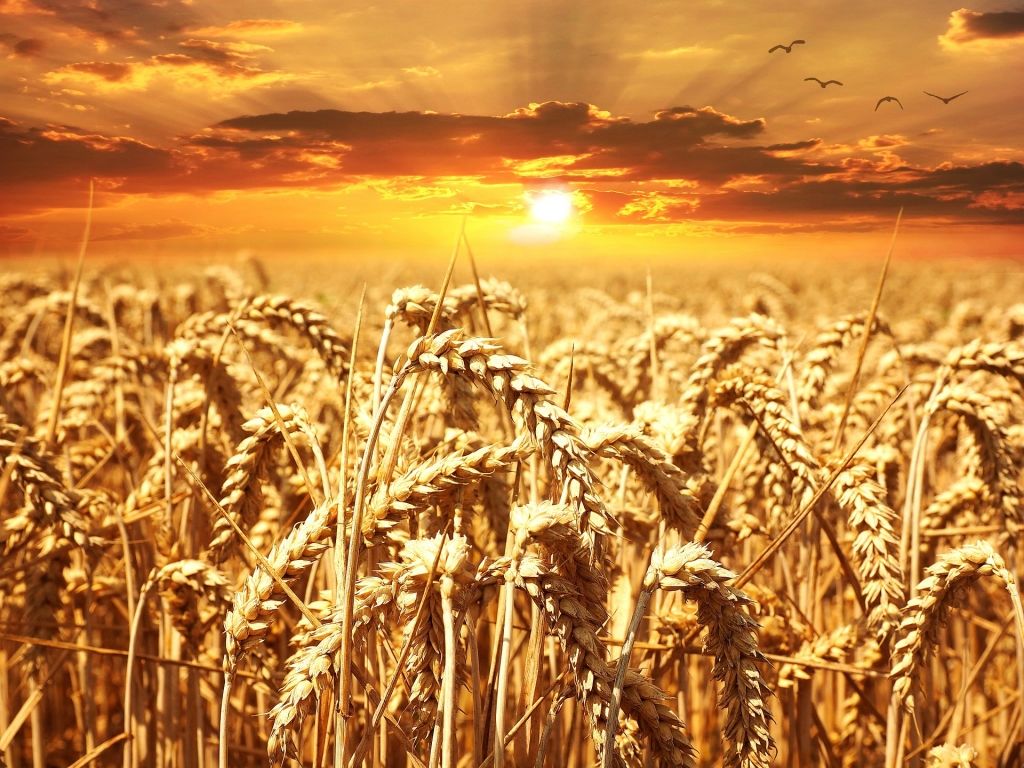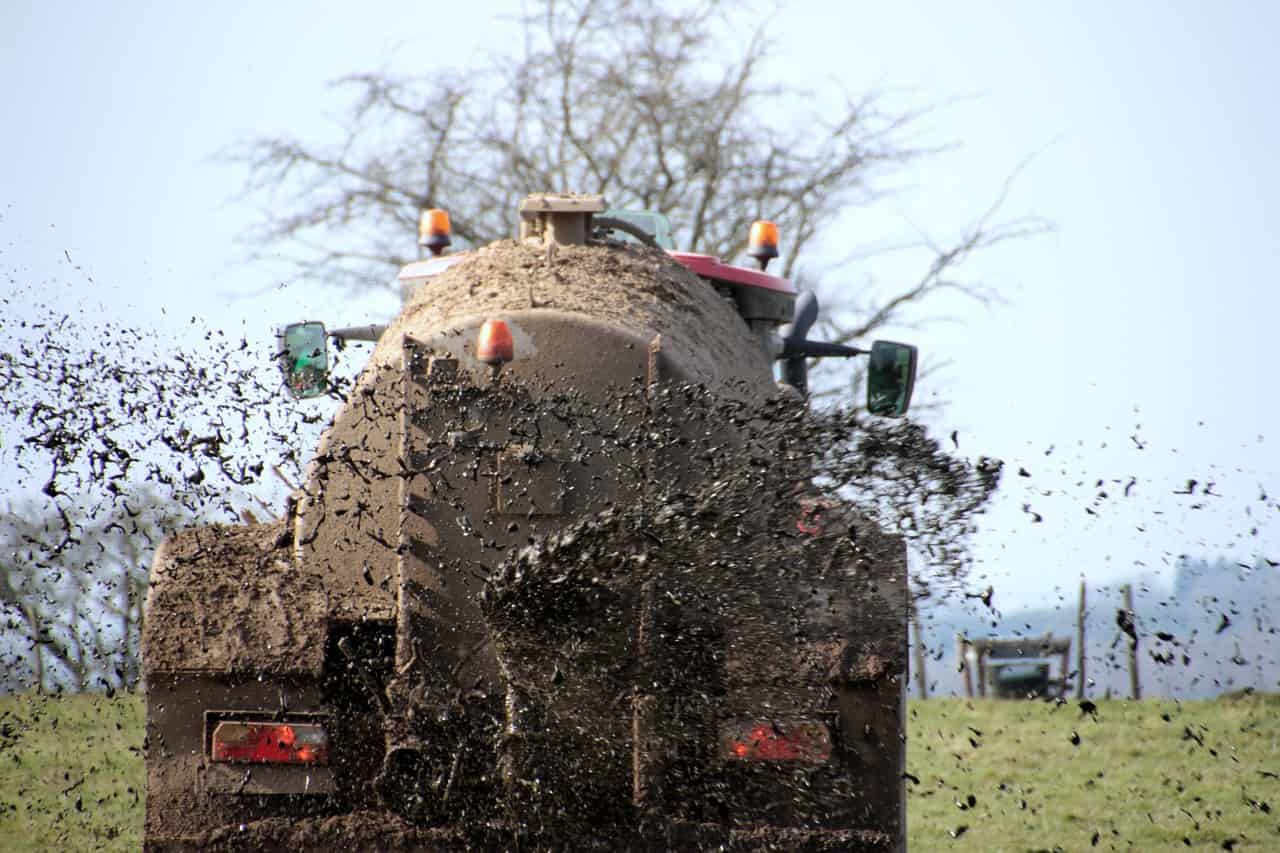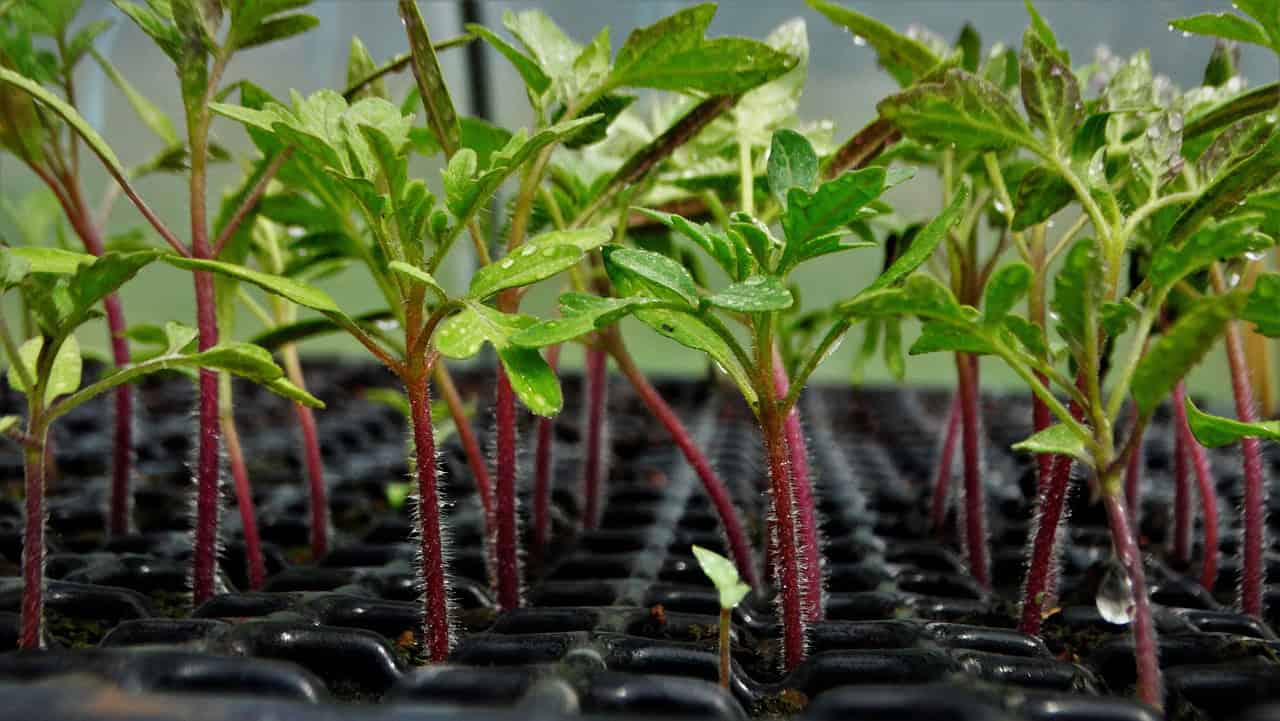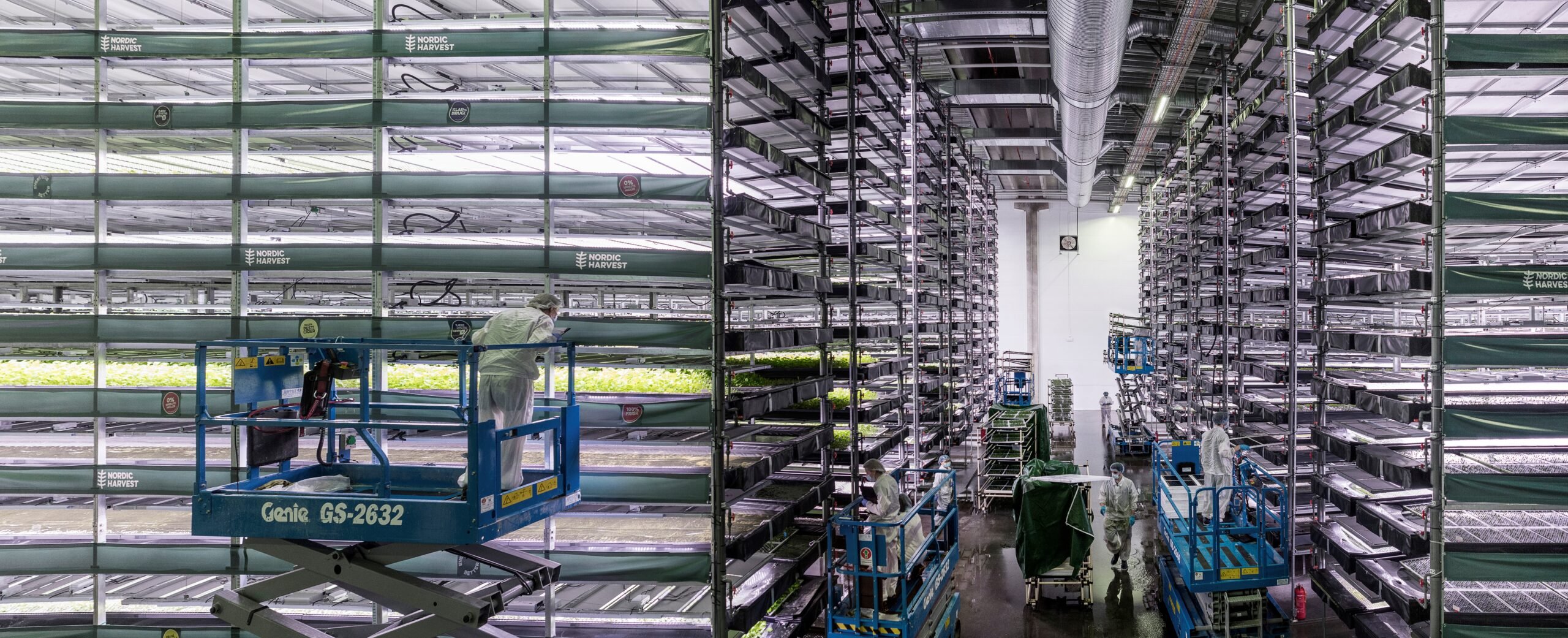
From the outside, it may look just like your regular office building. But inside, the future of farming takes place. Fruits, vegetables, and herbs are produced in layers and layers stacked above each other, known as vertical farming.
These office buildings are emerging across Europe, and are particularly suited for growing crops in urban areas where space is scarce. Producers promise nutritious, pesticide-free, high-quality crops. It may even help ensure food security in countries less conditioned for conventional farming. But while the first crops are already in stores in some countries, there are still some years before the European food market is overtaken with products from vertical farms.
Indoors farming where crops are stacked vertically.
Hydroponic farming – Plants are grown in a nutrient solution, usually water with fertilizers, and a growth medium instead of soil.
Aeroponic farming – Instead of soil, plants are grown in the air by regularly spraying a nutrient-rich mist to the roots.
Aquaponic farming – Combines aquaculture and hydroponic farming.
You can grow enough food for thousands of people on a small surface area.
Plants are grown in a controlled environment that can be installed everywhere. For example, arctic countries could grow strawberries and tomatoes during cold, dark winters.
The plants are less dependent on unpredictable weather conditions such as drought or floods.
Food grown in vertical farms could be of a higher quality and contain more nutrients than crops grown in the traditional way.
PFAL (plant factory with artificial lighting) – Farms operating in large buildings.
Container farms – Plants grown in shipping containers.
In-store farms – Commonly located in stores or restaurants.
Appliance farms – Small indoor growing systems suitable for home or office environments.
Germany, The Netherlands, France, and the United Kingdom all host several vertical farms. But farms and production companies are also found in many other countries across the continent.
Anything in theory. Today, most companies focus on leafy greens, herbs, and microgreens, and many look into growing strawberries and tomatoes as well. UK-based LettUs Grow grows tree whips for reforestation, fruit trees, and biomass as well. In the future, more greens could be introduced, maybe even cocoa.

Changing diets and higher demand
Together with cultivated meat, vertical farming is often presented as a main solution to combat future food crises. But first, why do we need vertical farms? Is it not enough to grow crops the old fashioned way, just like we humans have done it the past 10,000 years?
Food demand increases every year. According to the United Nations, the world population is estimated to increase to 9.7 billion people by 2050. All of these people need food. But growing food the traditional way has become more challenging. Climate change gives new growth conditions, which means that some crops can no longer grow where they used to. Harsher weather conditions and heavier storms destroy more crops each year. And in some places, the soil is less nutritious than before.
Besides meeting future fresh food demand, our diets today are far from as sustainable as a century ago. “Our enormous purchase power means that we demand all kinds of goods all year round. We don’t eat season-based anymore. In the winter, we eat salads and berries that we import,” says CEO Anders Riemann from Nordic Harvest, the largest hydroponic farm in Europe.

Summer crops from the Arctic
Vertical farms could be placed virtually anywhere. This means that in the cold Arctic, strawberries could be grown even during winter. People could finally enjoy these delicious berries without worrying about CO2 emissions from importing berries from across the world.
But there are more reasons why this method is highly sought after. Vertical farming requires no use of pesticides, and the producers are given full control to produce exactly what and how much they want within a time frame set by themselves and also with a specific quality of the crop. Weather or seasonal conditions and storms no longer affect the production, and more food can be grown on a smaller land area. It could also help reduce CO2 emission in the transport sector, as the food is grown closer to the customer instead of flown across the world.
How it works
“For me, the major advantage of vertical farming is full control. We can really optimize the process, we know exactly the amount we want to grow, we can grow the exact amount of the year, and also of a specific quality,” says Leo Marcelis, professor in Horticulture and Product Physiology at Wageningen Research University.
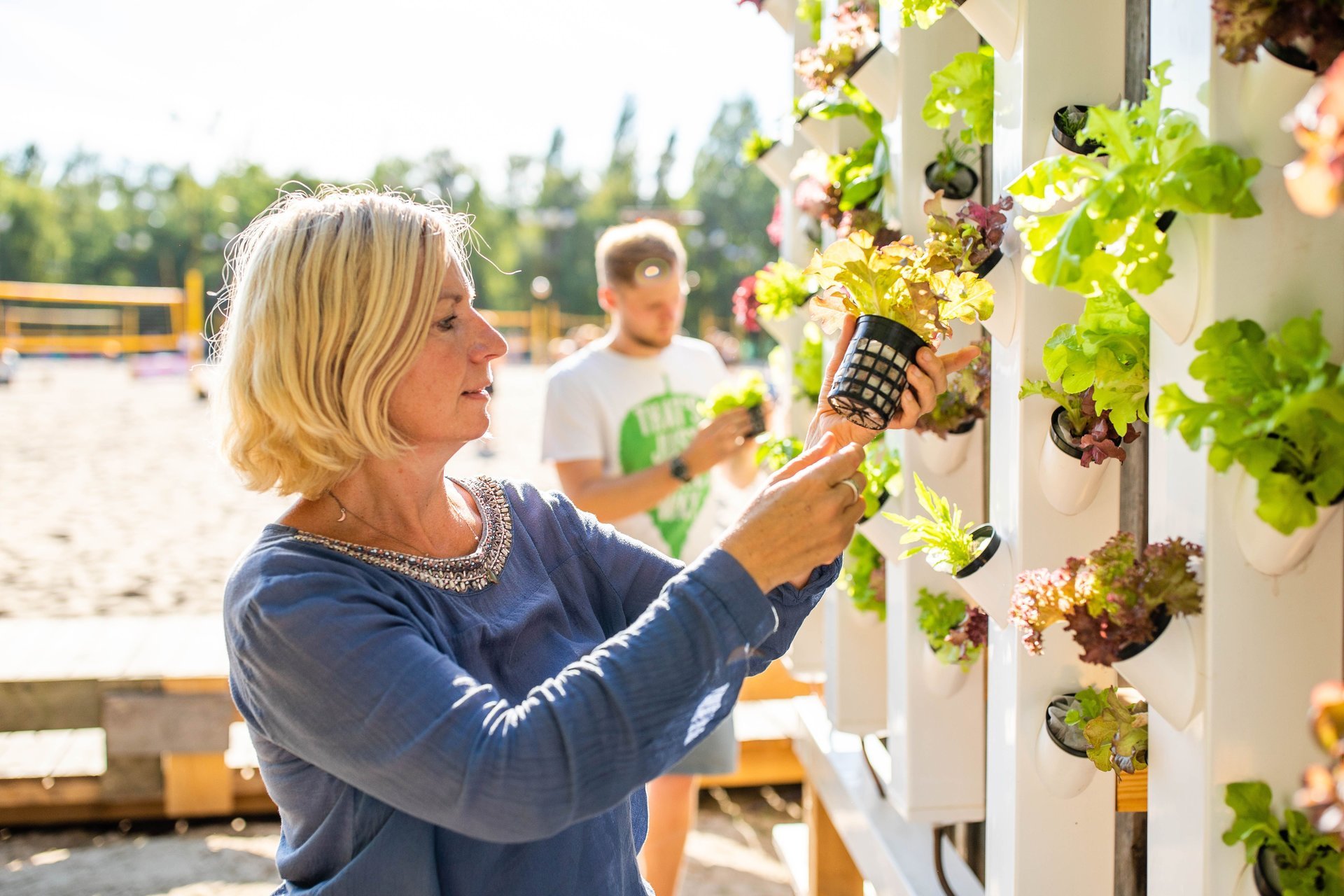
From water intake to daylight, temperature, and access to minerals and bacteria. Vertical farming happens under extremely controlled environments. Crops are grown indoors, with LED-lights replacing sunlight. LED-lights are small, durable, cost-effective, and they do not emit heat. While the sun goes down at the end of the day, these lights can shine for as long as it is needed. The farmer can manipulate the plant’s circadian rhythm to optimize its growth yield.
During the day, plants form starch in the leaves which are broken down into sugar and transported to the rest of the plant during the night. Some plants need more than 12 hours of light each day to grow, others need less. With vertical farming, each type can receive the amount of daylight they need to maximize their growth. Lights could also be kept on at times of the day when electricity prices are lower, for example during the night, as a way for the farm to save costs.
Changing growth through colours
The colors of these lights are especially important to optimize growth yield. Researchers have mainly focused on the effect of red, blue, and green light on a plant’s growth. Red light is very efficient for photosynthesis, but plants also need some blue lights which are especially useful in the production of chlorophyll. For some time, researchers aimed to decrease the use of green light, thinking it did not contribute to photosynthesis. However, a 2016 study from Utah State University shows it can bring photosynthesis to lower leaves at a more efficient rate than red or blue light can.
The farmer can use various color combinations to emphasize different qualities. With the right combination, the farmer can grow plants far more nutritious than conventional farming can. This could be practical as most plants have become less nutritious over the past decades. However, a different combination could be used to emphasize growth speed, so that more food could be created at once. Economically speaking, that could be desirable as vertical farming remains cost-intensive.
Farming without soil
Today, vertical farming mainly happens in two forms: hydroponic and aeroponic. According to Leo Marcelis, professor in Horticulture and Product Physiology at Wageningen Research University, both techniques are great alternatives.
In hydroponic farming, plants grow on shelves with their roots placed in nutrition-filled water instead of soil. It is considered the easiest of the two main systems.
As said, Nordic Harvest is a large actor in the European hydroponic market. Today, the company has a prototype farm near Copenhagen where they grow various kinds of salads, kale, and spinach. Located among other industry complexes, the prototype farm is a building the size of a football field. In 2023, they plan to expand with a farm in Oslo, followed by farms across Scandinavia and Finland.
According to Riemann, Nordic Harvest’s current production capacity is already noticeable: “We produce around 1000 tons of vegetables annually. The Danish market consists of around 20.000 tons per year. 6000 tons are farmed conventionally, and the rest is imported.” The vegetables are leafy greens. As the vertical farming scales up, it will make up a larger percentage of food production.
Some other hydroponic farming companies in Europe include Jones Food Company in the UK, Hydropousse in France, and Robbes Lilla Trädgård in Finland.
Aeroponics: Twice as efficient
Crops grown aeroponically have their roots out in the air. India Langley, food systems researcher and PR lead at the indoor farming technology provider LettUs Grow, explains how it works: “You have a series of nozzles with very tiny holes that provide the nutrient solution through very high pressure.”
Aeroponics was developed in the 1990s, when NASA sought ways to grow plants in space. According to the US National Center for Appropriate Technology, aeroponics are “by far the most efficient plant-growing system for vertical farms”. In an aeroponic system, the roots have easy access to oxygen. The plant’s growth rate is up to twice as fast as in a hydroponic system, where it would absorb dissolved oxygen in the water.
It is still not as widely used as hydroponics, due to its complexity. The nozzles used in the production can easily clog or break. But LettUs Grow has found a solution to the problem. “We have completely taken away the nozzles. The aerosol is generated on a completely flat surface so there is nothing that can clog or break. This simplicity means that we think we can bring aeroponics to a much larger scale,” says Langley.

LettUs Grow produces aeroponic farms which fit inside a shipping container. Their containers are mobile and can be placed wherever there is space. No planning permit is needed due to their temporary structure.
They are less common than hydroponics, but various aeroponic farms are found in various places in Europe, such as Agricool in France, Plant Factory Tech in Finland, and Agrotonomy which both operates in Spain and sells aeroponic tower farms all over the world.
Fish and plants grown together
While hydro- and aeroponics are two major techniques in vertical farming, they’re not the only ones. Other technologies are also used. In Europe, various companies use aquaponics as their farming strategy. Just like for hydroponics, aquaponic plants are grown with their roots in water. Fish grown in fish tanks produce highly nutritious waste which is then transported with the water to the plants. The plants take in the nutrients and thereby also clean the water for the fish.
According to Marcelis, aquaponics will make up only a small portion of the vertical farming market in the future. “The nice thing is that you use waste from the fish as nutrition for the plants. But be careful and ensure that you keep the plant system optimized,” he says about the technique.

It all started with lettuce
Nordic Harvest and LettUs Grow both began experimenting with growth of leafy greens before they moved on to herbs and microgreens. Next up are tomatoes and strawberries. According to Langley, multiple vertical farms follow the same stages of development – for good reasons. The products are delicate, greatly used high-value crops, which can cover the costs of production. They also grow fast and are small in size, which means a lot of plants can be grown at the same time.

As the industry scales up it becomes possible to grow a greater variety of crops. Marcelis believes we might see new varieties for sale in a few years. But developing new crop recipes is no easy task. It takes 5-10 years to breed a new type of plant suitable for vertical farming. Certain abilities, such as resistance to drought or pesticides, can be ignored. Others are more valuable. An ideal plant is small with short root systems, it is fast-growing, easy to harvest and has a high yield.
Besides growth abilities, the ‘plant recipe’ must be precisely created. “The biggest challenge is to keep track of every variable that affects the plant. You need the right nutrients and ensure that the plant has continuous access to the nutrition as they grow,” Riemann says.
No high-calorie wheat products the coming years
But while any crop can be grown vertically in theory, this will not happen anytime in the near future. Bulk crops such as wheat and corn are too cheap to produce vertically.
“I think at this moment, vertical farming is particularly suitable for fresh products. Technically, we can grow any crop, so we can also grow wheat very well in a vertical farm. But vertical farming is also relatively expensive. I think at this moment, growing those kinds of bulk products with relatively low value is not realistic. Even if the wheat prices now increase with the war in Ukraine,” says Marcelis.
This can differ from country to country. In places like Singapore and the United Arab Emirates, where around 90% of all food is imported, growing low value bulk products might still be valuable. In Europe, however, growing wheat vertically might be an option in the long-term future, but not in the coming five years.
Energy demanding and costly
The future is bright for vertical farming, but one challenge still remains. Growing crops indoors is highly energy demanding and therefore also very costly. The exact energy usage varies from farm to farm, system to system, location, season, and crop. For example, an aeroponic farm in Greece uses 2.87 kWh of energy to produce one kilogram lettuce during winter, but only 1.73 kWh during summer. Finnish iFarm calculates that growing romaine lettuce for a 90 day period takes 62.26 kWh per m2. For strawberries the number is 117.10 kWh per m2.

At most, a vertical farm could require 251% more energy than a greenhouse. But it could also need only 14% more energy, depending on where the greenhouse and vertical farm are located. Wageningen Research University and Delft university of technology have conducted a study where they compare greenhouses and vertical farms, named plant factories in the study. They compared greenhouses and vertical farms located in the Netherlands, UAE, and Sweden. For the latter country, both greenhouses with and without artificial lighting were studied. “The production of one kilogram dry weight of lettuce requires an input of 247 kWhe in a plant factory, compared to 70, 111, 182 and 211 kWhe in greenhouses in respectively the Netherlands, United Arab Emirates and Sweden (with and without additional artificial illumination),” the study reads.
In harsh climates, the difference in energy input between the two farms decreases. It is possible that vertical farms would be the most energy efficient choice in some extreme climates. But even in the Arctic Northern Sweden and desert-conditions of UAE, greenhouses might still be the most viable choice.
Optimizing the vertical farm
Vertical farms can somewhat overcome the problem of high electricity demand by optimizing production. We have already explored the option to control LED-lights and their color, which can affect both growth time and crop quality. The farm’s production cost might also be reduced as the farm becomes more automated. Robots that work 24/7 to bring nutrition at the right time, watch growth yield and harvest when the plant is ripe can be a costly first-time investment. But over time, the robots make up for the costs by their continuous work.
Despite its high demand for energy and currently limited assortment of crops cheap enough to grow, vertical farming grows in popularity, and we could expect it to grow larger in the coming years. Maybe you can soon buy fresh, nutritious berries grown in a container in your own urban neighborhood.

Support us!
Innovation Origins is an independent news platform that has an unconventional revenue model. We are sponsored by companies that support our mission: to spread the story of innovation. Read more.
At Innovation Origins, you can always read our articles for free. We want to keep it that way. Have you enjoyed our articles so much that you want support our mission? Then use the button below:



